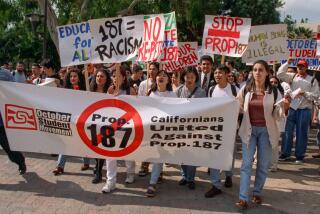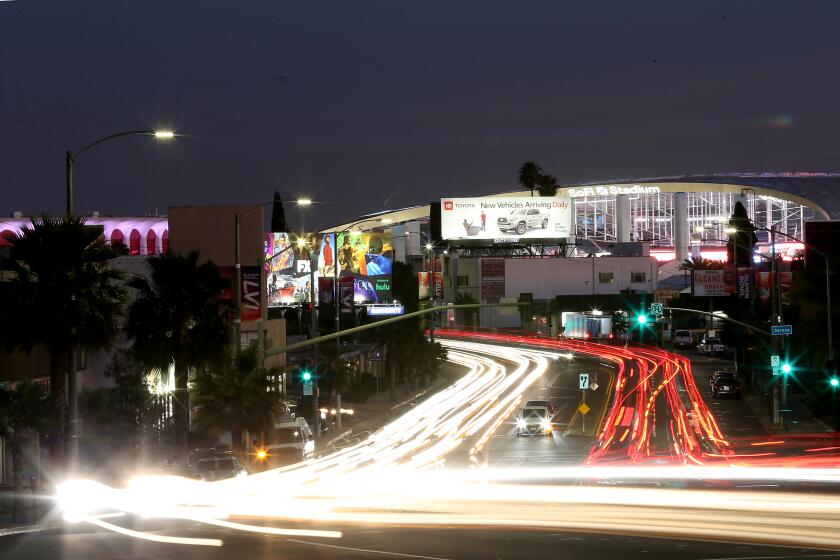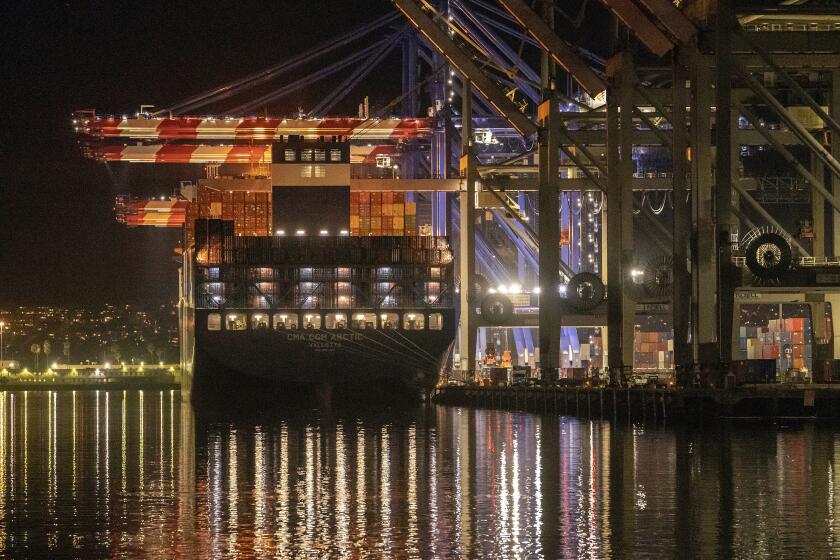Op-Ed: California, the new city state
California is rightly regarded as one of the bluest — that is, most Democratic — and most liberal states in the nation. But California’s political complexion is increasingly so distinctive that it should demand an entirely new coloration.
A sample of the liberal laws and administrative policies emanating from Sacramento in just the last year makes clear that this state is charting a course distinctly more progressive than the other 49. Its new budget provides Medicaid coverage, through Medi-Cal, to undocumented immigrant children. It has authorized the licensing of the undocumented in 40 professions and trades. The state’s Department of Labor has cracked down on business practices at the ports of Los Angeles and Long Beach and at Uber that misclassify employees as independent contractors, the better to underpay them. A bill that would raise the state minimum wage to $13 passed the state Senate in June and will be before the Assembly when it returns from its summer recess.
This isn’t a record that any other state can claim. Even among the seven states where Democrats control the governor’s office and both houses of the legislature, California remains an anomaly. All the others — Connecticut, Delaware, Hawaii, Oregon, Rhode Island and Vermont — are small. With the exception of Hawaii, they also have a substantially smaller share of minorities than the nation as a whole — one reason, perhaps, why their mostly white voters haven’t moved rightward.
As political scientist Robert Putnam has shown, rising racial diversity generally has the grim effect of lowering the level of social trust required to inspire support for public programs — schools, healthcare — that may benefit minorities.
But then there are Hawaii and California, which provide, by U.S. standards, generous benefits and rights to their diverse populations. Hawaii, however, was seldom if ever majority white. Not so California, which, like most states outside the South, was heavily white until the great wave of immigration from Latin America and Asia transformed it into a majority minority state. From 1980 to 2010, the white share of its population fell from 67% to 40%.
But changing demographics alone don’t explain California’s character. Texas, whose racial history and composition is similar to California’s, has politics that could not be more different. One crucial reason for that difference is that California’s labor movement has routinely conducted the biggest voter registration and get-out-the vote drives in Latino neighborhoods and been the linchpin of campaigns for immigrant rights, while in Texas, with virtually no labor movement to speak of, a California-scale mobilization of the minority vote has yet to occur. At the same time, in the cities of coastal California, the white electorate, quite unlike its Texas counterpart, has become more liberal, secular, predisposed to minority rights and environmental causes.
Indeed, California’s transformation over the last 35 years is closer to that of America’s cities than it is to that of any other state. As Republicans have won statehouse after statehouse, Democrats have prevailed in most major cities. Today, a record number — 25 of the 30 largest U.S. cities — have Democratic mayors. In most major cities, even in conservative states, Democrats command so overwhelming a majority of elected offices that business interests that routinely support Republicans for state and federal office seek out more centrist Democrats to back in local elections.
Two factors that should sound familiar in California have moved the cities leftward. The first is racial recomposition. Between 1980 and 2010, census data show the percentage of whites in New York City dropped from 53% to 37%; in Los Angeles, from 48% to 29%; in Houston, from 53% to 26%; in Phoenix, from 78% to 47%; in Columbus, Ohio, from 76% to 59%.
The second is the emergence of new urban coalitions, with unions, immigrant rights groups, African American community organizations and environmental groups at their core, and bolstered by the growing support of white millennials.
The forces that underpin the progressive ascendancy in cities — unions, environmental and immigrant groups — play an outsized role in California. In most states, the political conflicts between business and labor are fought out between the two parties. In California, as in most large cities, they’re fought out in Democrat vs. Democrat elections.
In recent years, it is America’s cities that have taken the lead in enacting ordinances to raise the minimum wage, promote clean energy and protect undocumented immigrants from random deportations. With Washington encased in gridlock and most states controlled by Republicans, liberals look increasingly to cities as harbingers of the nation’s multiracial and (they hope) progressive future. And to California — the mega-state that, politically, is effectively a mega-city.
Harold Meyerson, editor at large of the American Prospect, writes frequently about L.A.
Follow the Opinion section on Twitter @latimesopinion and Facebook
More to Read
A cure for the common opinion
Get thought-provoking perspectives with our weekly newsletter.
You may occasionally receive promotional content from the Los Angeles Times.






